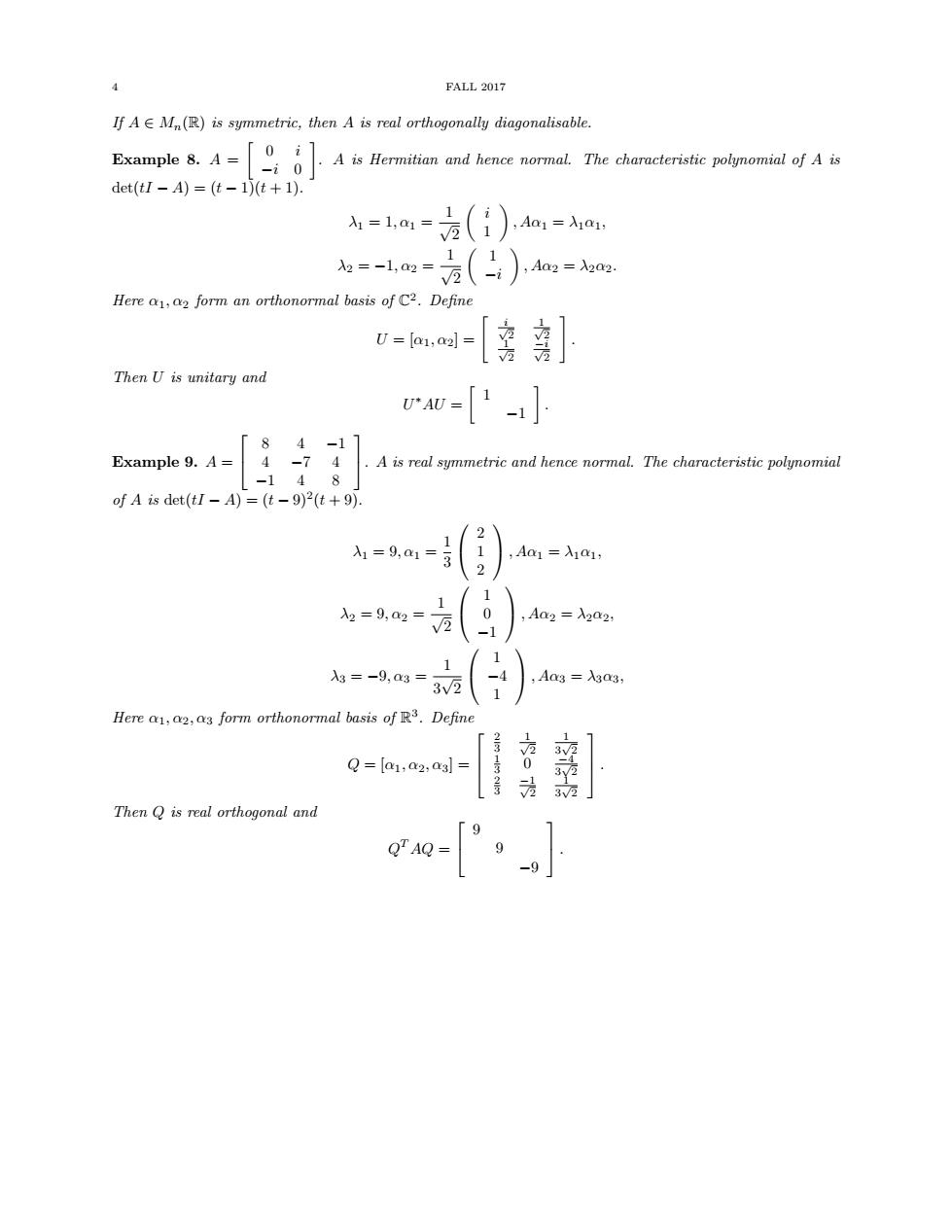正在加载图片...

4 FALL 2017 If AM(R)is symmetric,then A is real orthogonally diagonalisable. det(tI-A)=(t-1j(t+1). -1a-方()a-a =-=()a= Here form an orthonormal basis of C2.Define Then U is unitary and ra=[1-] Example 9.A= A is real symmetric and hence normal.The characteristic polynomial -148 of A is det(tI-A)=(t-9)2(t+9). =9,= 0,Aa2=22 1 Here a,02,as form orthonormal basis of R3.Define Q=[a1,02.03]= Then Q is real orthogonal and 「9 9 -94 FALL 2017 If A ∈ Mn(R) is symmetric, then A is real orthogonally diagonalisable. Example 8. A = 0 i −i 0 . A is Hermitian and hence normal. The characteristic polynomial of A is det(tI − A) = (t − 1)(t + 1). λ1 = 1, α1 = 1 √ 2 i 1 , Aα1 = λ1α1, λ2 = −1, α2 = 1 √ 2 1 −i , Aα2 = λ2α2. Here α1, α2 form an orthonormal basis of C 2 . Define U = [α1, α2] = " √ i 2 √ 1 2 √ 1 2 √−i 2 # . Then U is unitary and U ∗AU = 1 −1 . Example 9. A = 8 4 −1 4 −7 4 −1 4 8 . A is real symmetric and hence normal. The characteristic polynomial of A is det(tI − A) = (t − 9)2 (t + 9). λ1 = 9, α1 = 1 3 2 1 2 , Aα1 = λ1α1, λ2 = 9, α2 = 1 √ 2 1 0 −1 , Aα2 = λ2α2, λ3 = −9, α3 = 1 3 √ 2 1 −4 1 , Aα3 = λ3α3, Here α1, α2, α3 form orthonormal basis of R 3 . Define Q = [α1, α2, α3] = 2 3 √ 1 2 1 3 √ 2 1 3 0 −4 3 √ 2 2 3 √−1 2 1 3 √ 2 . Then Q is real orthogonal and Q T AQ = 9 9 −9